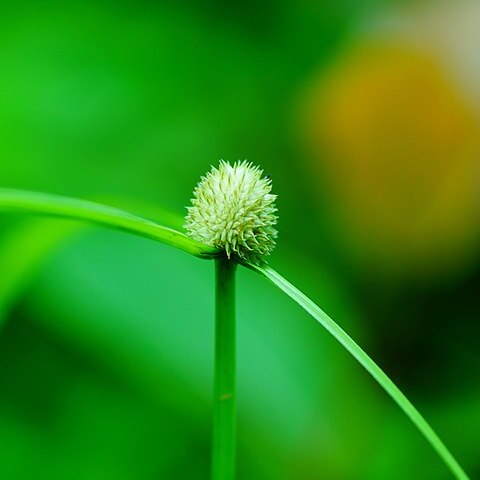Plants with stolons, 10-100 mm long, slender, white and pliable when fresh, fragrant, about 2 mm in diam., with membranous, pink-brown, striate scales, developing fine feathery roots. Culms usually distant, occasionally clustered, 40-570 mm tall, flaccid (except Getliffe 193), triangular, bases not thickened. Leaves usually shorter than culms, sheaths membranous west pinkish-brown, striate; blades 3-5 mm wide, flat, margins and keek scabrid particularly near apex, flaccid (except Getliffe 193). Bracts 3-4, 1100-1300 mm long, clasping inflorescences, upright later reflexed or spreading. Spike-lets many, ovate elliptic in outline, 2.95-5 mm long, floret 1 bisexual, rarely second male floret, fertile glumes 2 sometimes with third reduced hyaline glume, sides of both well-developed glumes obscurely nerved, 3-4 prominent nerves close to thick fleshy green winged keel that is excurrent into slightly recurved mucro 0.5-0.8 mm long; wing 0.1-0.15 mm wide, spinulose. Stamens 3. Style long, slender, bifid. Nut 1, less than 1/2 of length of spikelet, obovoid to oblong, butter yellow turning red-brown, later black, slightly apiculate.
More
Perennials. Rhizomes long creeping. Culms distant or laxly tufted, 10-40 cm tall, slender, compressed triquetrous, base not swollen. Leaves usually shorter than culm; sheath brown or purplish brown maculate, short, basalmost bladeless; leaf blade 2.5-4.5 mm wide, flat, flaccid, margin laxly dentate. Involucral bracts 3 or 4, leaflike, much longer than inflorescence. Spike 1(-3), ovoid to globose, 5-9 × 5-7 mm, with numerous spikelets. Spikelets subobovoid to narrowly ovoid-oblong, 2.5-3.5 × ca. 1.5 mm, compressed, 1-flowered. Glumes pale to straw-colored and rusty brown maculate, boat-shaped, 2.5-3.5 mm, keel wings narrow at basal part and ± broad from middle to apex, veins 3 or 4 on each side of keel, margin spinulose, apex slightly recurved mucronate. Stamens 3. Style long; stigmas 2. Nutlet brown, oblong to obovoid-oblong, ca. 1/2 as long as subtending glume, compressed plano-convex, densely puncticulate, apex shortly mucronate. Fl. and fr. May-Aug. 2n = 18.

